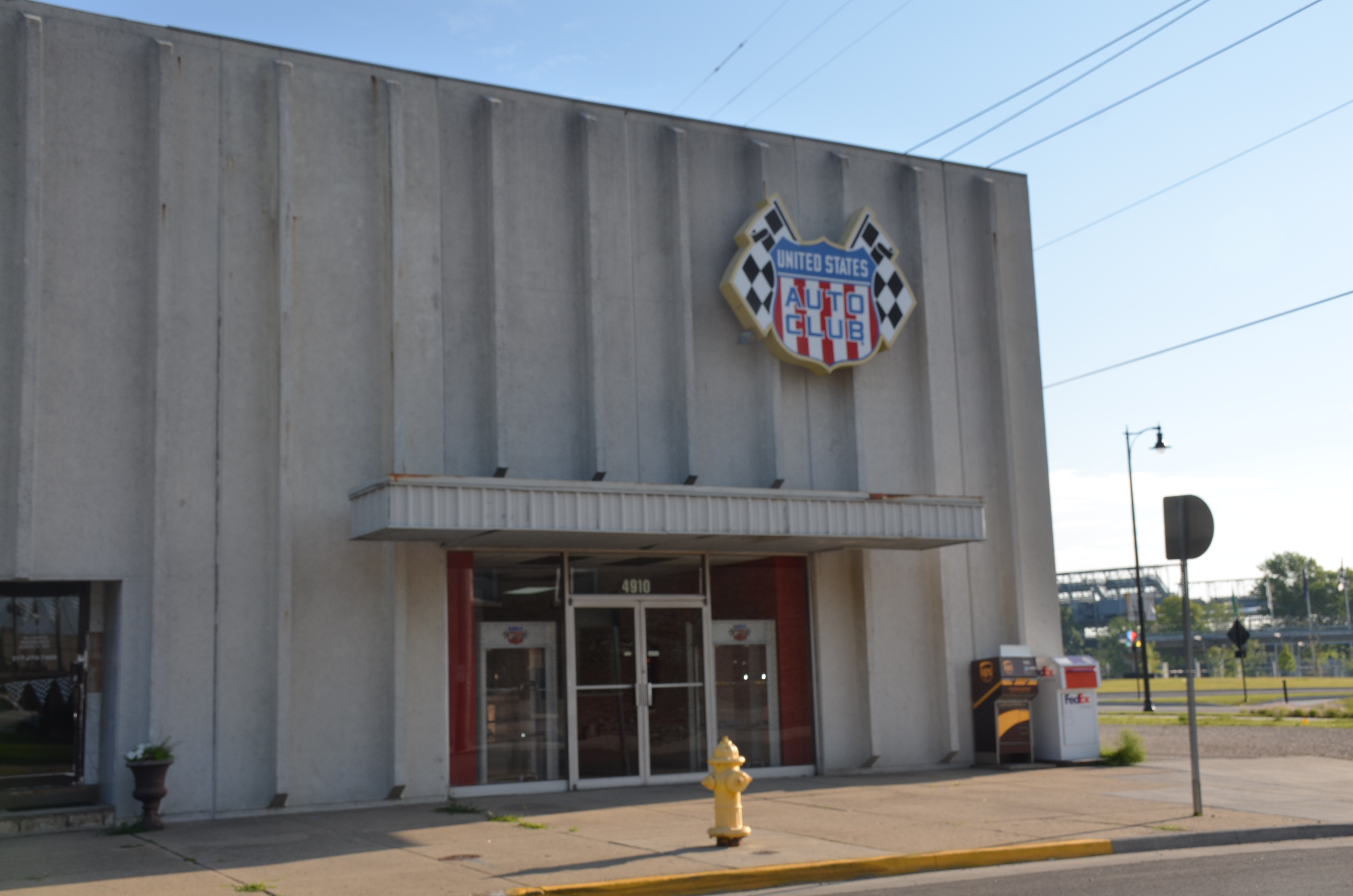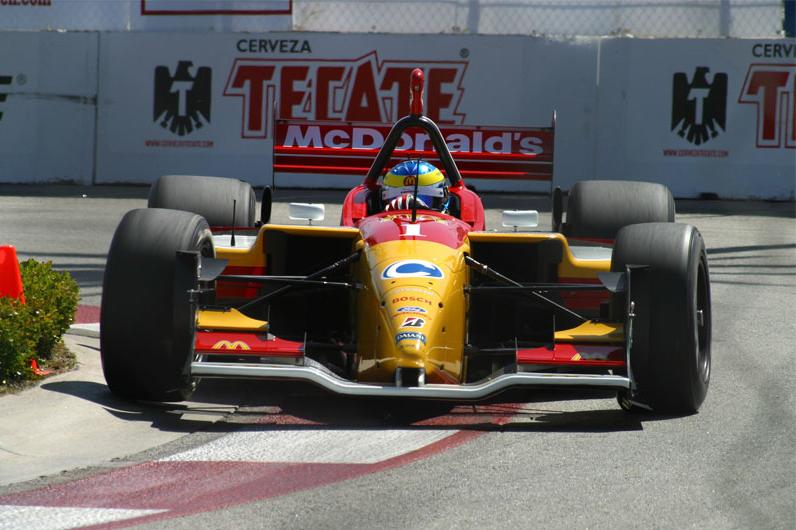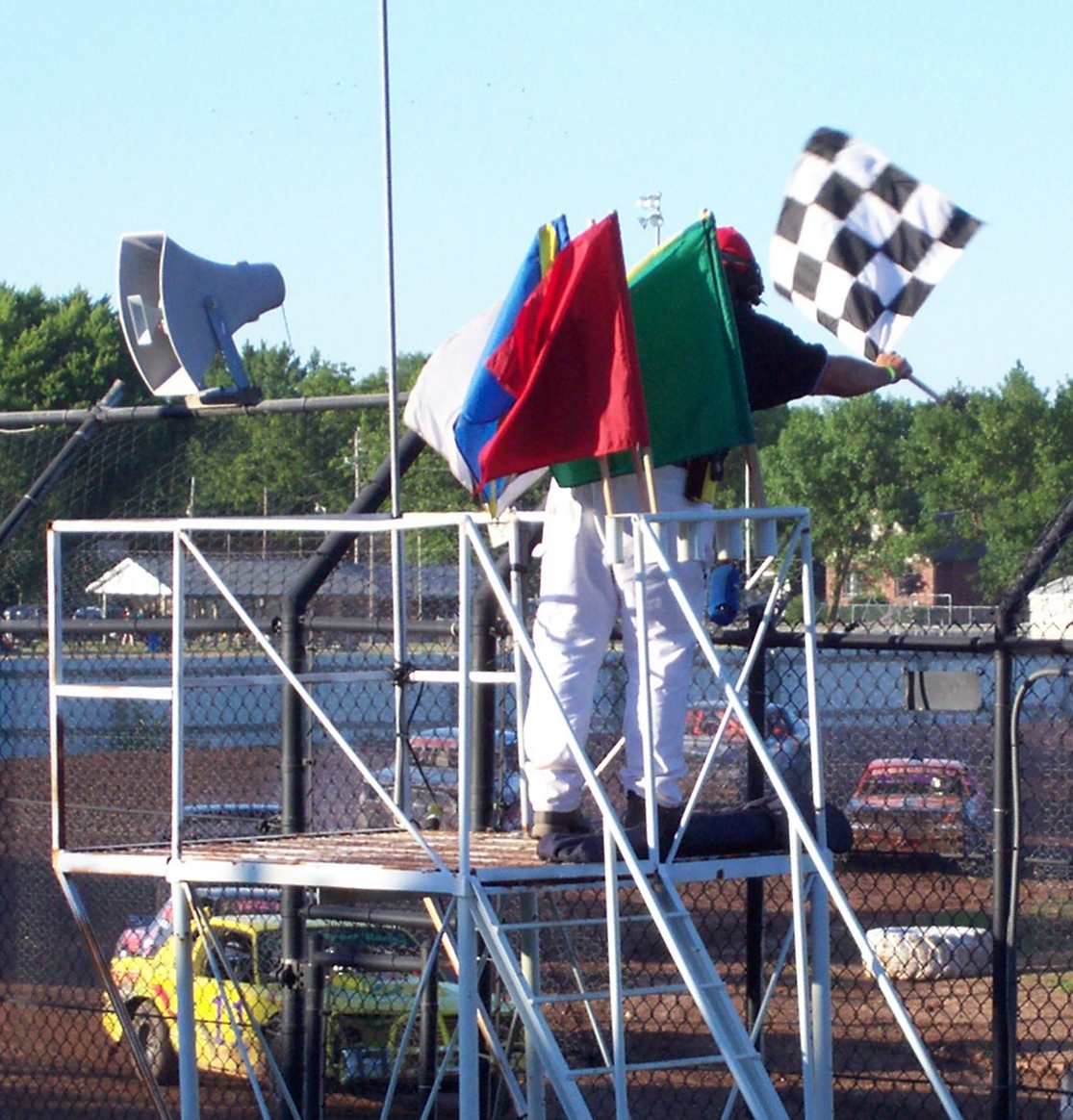|
1981 Indianapolis 500
The 65th Indianapolis 500 was held at the Indianapolis Motor Speedway in Speedway, Indiana on Sunday, May 24, 1981. The race is widely considered one of the most controversial races in Indy history. Bobby Unser took the checkered flag as the winner, with Mario Andretti finishing second. After the conclusion of the race, USAC officials ruled that Unser had passed cars illegally while exiting the pit area during a caution on lap 149 (of 200). Unser was subsequently issued a one-position penalty. The next morning, the official race results were posted, and Unser was dropped to second place. Mario Andretti was elevated to first place and declared the race winner. A firestorm of controversy followed the ruling. After a lengthy protest and appeals process, the penalty was rescinded, and Unser was reinstated the victory on October 9. Officially, it became Unser's third-career Indy 500 victory and his final win in Indy car competition. Unser stepped out of the car at the end of ... [...More Info...] [...Related Items...] OR: [Wikipedia] [Google] [Baidu] |
United States Auto Club
The United States Auto Club (USAC) is one of the sanctioning bodies of auto racing in the United States. From 1956 to 1979, USAC sanctioned the United States National Championship, and from 1956 to 1997 the organization sanctioned the Indianapolis 500. Today, USAC serves as the sanctioning body for a number of racing series, including the Silver Crown Series, National Sprint Cars, National Midgets, Speed2 Midget Series, .25 Midget Series, Stadium Super Trucks, and Pirelli World Challenge. Seven-time USAC champion Levi Jones is USAC's Competition Director. History When the American Automobile Association (AAA) withdrew from auto racing after the 1955 season, citing the Le Mans disaster and the death of Bill Vukovich at Indianapolis as contributing factors, both the SCCA and NASCAR were mentioned as its potential successor. Ultimately, USAC was formed by Indianapolis Motor Speedway owner Tony Hulman. It became the arbiter of rules, car design, and other matters for what it ... [...More Info...] [...Related Items...] OR: [Wikipedia] [Google] [Baidu] |
1980 Indianapolis 500
The 64th 500 Mile International Sweepstakes was held at the Indianapolis Motor Speedway in Speedway, Indiana on Sunday, May 25, 1980. Johnny Rutherford won the pole position, led 118 laps, and won the race by a commanding 29.92 second margin. After failing to finish the race the year before (with Al Unser behind the wheel), Jim Hall's radical new Chaparral 2K ground effects chassis was a heavy favorite entering the month, and drove a flawless race. Rutherford, the winner in 1974 and 1976, became the sixth driver to win the Indy 500 three times. Tom Sneva broke an Indy 500 record by becoming the first driver to start last (33rd) and lead the race. Sneva led two times for 16 laps, and finished the race in second position. Sneva likewise became the first driver in Indy history to start last and finish second (a feat tied by Scott Goodyear in 1992). It was Sneva's third runner-up finish in four years, matching Bill Holland's achievement exactly 30 years earlier in 1947, 1948 a ... [...More Info...] [...Related Items...] OR: [Wikipedia] [Google] [Baidu] |
Pocono IndyCar 400
The ABC Supply 500 was an IndyCar Series race held at Pocono Raceway in Long Pond, Pennsylvania, located in the Pocono Mountains. The first Indy car race at Pocono was held in 1971. It was the first major event held at the track, shortly after its completion. The race was sanctioned by USAC from 1971 to 1981, and then by CART from 1982 to 1989, and was known as the Pocono 500. The race was removed from the CART calendar following the 1989 running, due to poor track conditions, as well as poor revenue for the promoter. After a 23-year hiatus, the event was revived by the IndyCar Series in 2013. Following management changes at the facility, and after comprehensive safety improvements were completed at the track, the race was scheduled for Independence Day weekend. For 2013, the race was scheduled for 400 miles, and was part of the IndyCar Triple Crown. For 2014, the race returned to its traditional 500-mile distance, and was scheduled in mid-to-late August. A. J. Foyt is the most ... [...More Info...] [...Related Items...] OR: [Wikipedia] [Google] [Baidu] |
Champ Car
Champ Car World Series (CCWS) was the series sanctioned by Open-Wheel Racing Series Inc., or Champ Car, a sanctioning body for American open-wheel car racing that operated from 2004 to 2008. It was the successor to Championship Auto Racing Teams (CART), which sanctioned the 'PPG Indy Car World Series from 1979 until dissolving after the 2003 season. Vehicles Champ Cars were single-seat, open-wheel racing cars, with mid-mounted engines. Champ cars had sculpted undersides to create ground effect and prominent wings to create downforce. The cars would use a different aerodynamic kit on the occasions they raced on an oval. With funds low, development was effectively frozen with a focus on developing a universal chassis, and the series generally ran on CART-spec 2002 Lola chassis from 2003 to 2006. The new chassis was developed by Panoz and debuted in 2007 as the Panoz DP01. The chassis was well received by drivers and fans. The series leased 750hp 2.65 L V-8 turbocharge ... [...More Info...] [...Related Items...] OR: [Wikipedia] [Google] [Baidu] |
Firestone Indy 400
The Firestone Indy 400 was an IndyCar Series race held at Michigan International Speedway in Brooklyn, Michigan. The event was most recently held in 2007. From 1981 to 2001, the event was better-known as the Michigan 500, and was held in high prestige. During its heyday of the 1980s, the race was part of Indy car racing's 500-mile "Triple Crown". Between 1968 and 2007, Michigan International Speedway hosted a total of 55 Indy car races, including twenty-two 500-mile events. In several seasons, the facility hosted two separate races annually. The races at Michigan became notorious for high speed, being rough on equipment, high attrition, and for devastating crashes. The 1990 race, won by Al Unser Jr. (189.727 mph) was the fastest 500-mile race in history at the time, a record that stood until 2002. Two drivers ( Michael Andretti and Scott Goodyear) won the Michigan 500 twice, while Tony Kanaan won a 500-mile race and a 400-mile race. In addition, the track has produced ... [...More Info...] [...Related Items...] OR: [Wikipedia] [Google] [Baidu] |
Rick Mears
Rick Ravon Mears (born December 3, 1951) is a retired American race car driver. He is one of four men to win the Indianapolis 500 four times (1979, 1984, 1988, 1991) and is the current record-holder for pole positions in the race with six (1979, 1982, 1986, 1988, 1989, 1991). Mears is also a three-time Indycar series/World Series champion (1979, 1981 and 1982). Biography Early years Mears was born in Wichita, Kansas and raised in Bakersfield, California. He began his racing career in off-road racing. In 1976, he was recommended by a representative of Bill Simpson' helmet company, and Simpson gave him a ride at the USAC Champ Car's Ontario 500 on an old Eagle-Offenhauser, finishing 8th. Simpson then sold the car to Art Sugai, on condition that Mears would continue driving it. In mid 1977 he switched to Theodore Racing. His speed attracted the attention of Roger Penske. Although at the time Penske Racing had the services of Mario Andretti and Tom Sneva, Andretti was also r ... [...More Info...] [...Related Items...] OR: [Wikipedia] [Google] [Baidu] |
Danny Ongais
Danny Ongais (May 21, 1942 – February 26, 2022) was an American racing driver. Ongais was the only native Hawaiian to compete in the Indianapolis 500. He competed professionally in motorcycle, sports car, CART, IndyCar, Formula One, and drag racing. A fearless figure on the racing circuit, Ongais was nicknamed "On-Gas" and "The Flyin' Hawaiian." In the 1960s he won multiple drag racing championships and was named one of the National Hot Rod Association’s Top 50 Drivers for 1951-2000. In the 1970s he moved to competing in sports cars and Indy cars, winning races in both types, including the 24 Hours of Daytona in 1979 and several Indy car races in 1977 and 1978. He also raced in Formula One, in 1977-78, in six Grands Prix, recording a best result of seventh. He was known as a fast and daring driver, but he experienced multiple crashes in his career, some resulting in injury. At the 1981 Indianapolis 500, he was involved in a near-fatal accident that caused him to ... [...More Info...] [...Related Items...] OR: [Wikipedia] [Google] [Baidu] |
American Championship Car Racing
American open-wheel car racing, also known as Indy car racing, is a category of professional automobile racing in the United States. As of 2022, the top-level American open-wheel racing championship is sanctioned by IndyCar. Competitive events for professional-level, single-seat open-wheel race cars have been conducted under the auspices of various sanctioning bodies since 1902. A season-long, points-based, National Championship of drivers has been officially recognized in 1905, 1916, and since 1920. The open-wheeled, winged, single-seater cars have generally been similar to those in Formula One, though there are important differences. The cars that compete on the American Championship circuit are popularly known as "Indy cars" after the Indianapolis 500, the premier event of Indy car racing. This form of racing was especially popular in the decades after World War II. The "golden era" of the 1950s was followed by a decade of transition and innovation in the 1960s, which ... [...More Info...] [...Related Items...] OR: [Wikipedia] [Google] [Baidu] |
Racing Flags
Racing flags are traditionally used in auto racing and similar motorsports to indicate track condition and to communicate important messages to drivers. Typically, the starter, sometimes the grand marshal of a race, waves the flags atop a flag stand near the start/finish line. Track marshals are also stationed at observation posts along the race track in order to communicate both local and course-wide conditions to drivers. Alternatively, some race tracks employ lights to supplement the primary flag at the start/finish line. Summary While there is no universal system of racing flags across all of motorsports, most series have standardized them, with some flags carrying over between series. For example, the chequered flag is commonly used across all of motorsport to signify the end of a session (practice, qualifying, or race), while the penalty flags differ from series to series. FIA-sanctioned championship flags are the most commonly used internationally (outside of North Am ... [...More Info...] [...Related Items...] OR: [Wikipedia] [Google] [Baidu] |
Pit Stop
In motorsports, a pit stop is a pause for refuelling, new tyres, repairs, mechanical adjustments, a driver change, as a penalty, or any combination of the above. These stops occur in an area called the pits, most commonly accessed via a pit lane which runs parallel to the start/finish straightaway of the track and is connected to it at each end. Along this lane is a row of garages (typically one per team or car) outside which the work is done in a ''pit box''. Pit stop work is carried out by the pit crew of up to twenty mechanics, depending on the series regulations, while the driver often waits in the vehicle (except where a driver change is involved or in motorbike racing). The term is also used generically to describe a short break in a journey. Location and terminology Depending on the circuit, the garage may be located on pit lane or in a separate area. In most series, the order of the teams' pit boxes is assigned by points standings, race results, or previous qualifyin ... [...More Info...] [...Related Items...] OR: [Wikipedia] [Google] [Baidu] |
United States Automobile Club
The United States Auto Club (USAC) is one of the sanctioning bodies of auto racing in the United States. From 1956 to 1979, USAC sanctioned the United States National Championship, and from 1956 to 1997 the organization sanctioned the Indianapolis 500. Today, USAC serves as the sanctioning body for a number of racing series, including the Silver Crown Series, National Sprint Cars, National Midgets, Speed2 Midget Series, .25 Midget Series, Stadium Super Trucks, and Pirelli World Challenge. Seven-time USAC champion Levi Jones is USAC's Competition Director. History When the American Automobile Association (AAA) withdrew from auto racing after the 1955 season, citing the Le Mans disaster and the death of Bill Vukovich at Indianapolis as contributing factors, both the SCCA and NASCAR were mentioned as its potential successor. Ultimately, USAC was formed by Indianapolis Motor Speedway owner Tony Hulman. It became the arbiter of rules, car design, and other matters for what it te ... [...More Info...] [...Related Items...] OR: [Wikipedia] [Google] [Baidu] |
Mario Andretti
Mario Gabriele Andretti (born February 28, 1940) is an Italian-born American former racing driver. One of the most successful drivers in the history of motorsports, Andretti is one of only two drivers to have won races in Formula One, IndyCar, the World Sportscar Championship, and NASCAR (the other being Dan Gurney). He has also won races in midget car racing and sprint car racing. During his career, Andretti won the 1978 Formula One World Championship, four IndyCar titles (three under USAC sanctioning, and one in CART), and IROC VI. To date, he remains the only driver ever to win the Indianapolis 500 (1969), Daytona 500 (1967) and the Formula One World Championship, and, along with Juan Pablo Montoya, the only driver to have won a race in the NASCAR Cup Series, Formula One, and an Indianapolis 500. As of 2021, Andretti's victory at the 1978 Dutch Grand Prix is the last Formula One win by an American driver. Andretti had 109 career wins on major circuits. Andretti had a long c ... [...More Info...] [...Related Items...] OR: [Wikipedia] [Google] [Baidu] |











